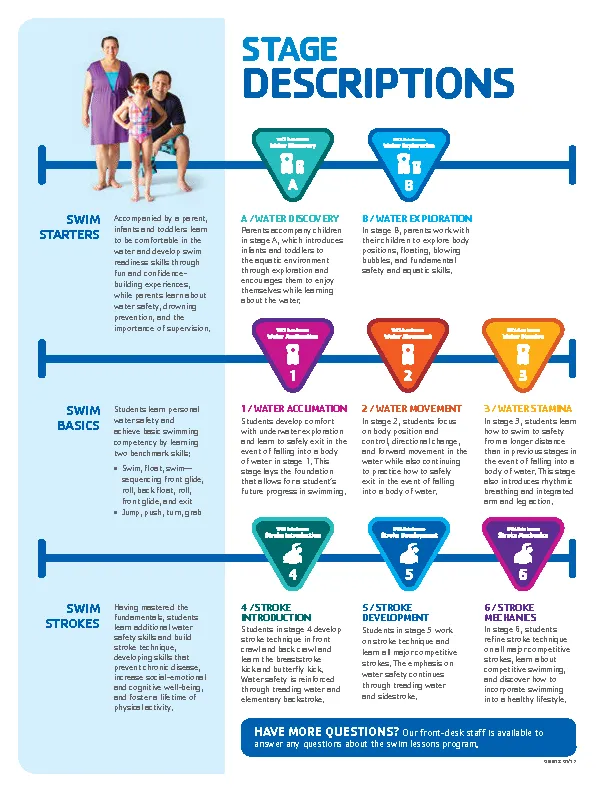STRONG SWIMMERS. CONFIDENT KIDS.
Introducing 8-Lesson Session & Competitive New Pricing
Swimming is one of life’s most essential skills: the ability to swim can help save your life or someone else’s life, while introducing you to a lifetime of healthy, enjoyable activity in the water. With more than 110 years of experience teaching millions of people to swim, the Y is America’s most trusted swim instructor. Our swim program is progressive, increasing safety and building stronger, confident swimmers. Learn about our swim curriculum below.
Things to know:
- The Y offers lessons for kids and adults of all ages and abilities
- Registration is offered year-round - 4-lesson and NEW 8-lesson sessions is available
- Y members can save $$ on swim lessons and get access to early registration. Not a member? Join today.
- Non-members can register 31 days ahead of the program start date
- NEW: Starting April 1, the Y is offering new, competitive pricing AND 8-lesson sessions!
*Please note that you must be logged into your account to view available classes
Swim Lessons at the Aurora YMCA
Swim Lessons at the Southwest YMCA
Swim Lessons at the University Hills YMCA
Where students start on the new swim curriculum is based on their age and stage of swimming ability.
- 6 month to 3 years: Parent and Child, Swim Starters has two levels A & B
- 3 to 5 years: Preschool, Swim Basics has Stage 1-4
- 6 to 12 years: School Age, Swim Basics to Swim Stroke are Stages 1-6
- 12 years+, Teens & Adults: Swim Basics to Swim Stroke are Stages 1-6
In Swim Starters, infants and toddlers are joined by their parents in the water. They learn to be comfortable in the water and develop swim readiness skills through fun and confidence building experiences, while parents learn about water safety, drowning prevention, and the importance of supervision.
- Stage A – Water Discovery: Students are introduced to the aquatic environment and encouraged to enjoy the water. Move to Stage B when you can respond to verbal cues and jump on land and you are at least 2 years old.
- Stage B – Water Exploration: Students explore body positions, floating, and blowing bubbles, and learn fundamental safety and aquatics skills. Move to Stage 1 when you are comfortable working with an instructor without a parent in the water and are at least 3 years old.
In these stages, students learn personal water safety and benchmark swimming skills, including “Swim, float, and swim” and “Jump, push, turn, grab.”
- Stage 1 – Water Acclimation: Students develop comfort with underwater exploration and learn to safely exit in the event of falling into a body of water. This stage lays the foundation that allows for a student’s future progress in swimming. Move to Stage 2 when you are willing to go under water voluntarily, you can front and back float, and glide with assistance.
- Stage 2 – Water Movement: Students focus on body position and control, directional change, and forward movement in the water, while continuing to practice how to safely get out of the water if they fall in. Move to Stage 3 when you can do a front and back float on your own, front and back glide for 5' (preschoolers" or 10' (school age).
- Stage 3 – Water Stamina: Students learn to swim longer distances. They learn how to do rhythmic breathing and integrate movements of their arms and legs. Move to Stage 4 when you can swim 10 yards (preschool) or 15 yards (school age) on your front and back and swim-float-swim 15 yards (preschool) or 25 yards (school age).
Having mastered the fundamentals, students in these stages learn additional water safety skills and build stroke technique and develop skills that prevent chronic disease, increase social-emotional and cognitive well-being, and foster a lifetime of physical activity.
- Stage 4 – Stroke Introduction: Students develop stroke technique in front crawl and back crawl and learn the breaststroke kick and butterfly kick. Water safety is reinforced through treading water and elementary backstroke. Move to Stage 5 when you can swim 15 yards doing the elementary backstroke, front and back crawl with rotary breathing, swim-float-swim 25 yards and 15 yards of breaststroke and butterfly kicks.
- Stage 5 – Stroke Development: Students work on stroke technique and learn all major competitive strokes. The emphasis on water safety continues through treading water and sidestroke. Move to Stage 6 when you can swim 50 yards continuously of any stroke, 25 yards of good front crawl, side-stroke, elementary backstroke and breaststroke.
- Stage 6 – Stroke Mechanics: Students refine stroke technique on all major competitive strokes and learn about competitive swimming.
